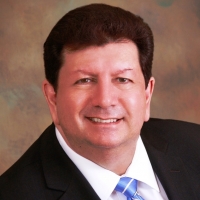How can a single business, not a regional center, use multiple EB-5 investors to operate as long as 10 full-time jobs are created for each investor?
Answers

Ed Beshara
EB-5 Immigration attorneysIn a direct EB-5 project each EB-5 investor can be a percentage owner of the new commercial enterprise. Each investor will have to create 10 full time jobs for U.S. citizens or permanent residents.

Shahzad Q Qadri
Creating EB-5 Regional CentersThis requires structuring the deal - you will need to contact an attorney to determine what is the most feasible way to structure the deal.

Julia Roussinova
EB-5 Immigration attorneysA direct investment model may use multiple EB-5 investors and EB-5 investors may pool funds as long as at least 10 full-time permanent jobs (at least 35-hour a week W-2 jobs) are created per investor. Indirect/induced job creation using reasonable methodologies is allowed through a regional center project.

Salvatore Picataggio
EB-5 Immigration attorneysYou can still operate as a direct EB-5 project that requires multiple investors, but you will have to create 10 direct jobs per investor instead of a combination of direct, indirect, and induced jobs.

Fredrick W Voigtmann
EB-5 Immigration attorneysThe new commercial enterprise, or its wholly-owned subsidiary, must directly create at least 10 new full-time positions for U.S. workers. There is no restriction on using multiple investors in a non-regional center EB-5 project. As long as the other requirements are met, a single business using the full amount of invested capital by multiple investors for job-creating purposes will qualify.

Mahsa Aliaskari
EB-5 Immigration attorneysGenerally, a direct pooled investment is utilized by businesses outside of the regional center context. The same criteria relating to the role of the investor applies in the direct investment context.

John J Downey
EB-5 Immigration attorneysOne investor for each 10 direct jobs if you are not using a regional center. You may use as many investors as there are jobs created.

Karen-Lee Pollak
EB-5 Immigration attorneysYou can have funding by several investors in one business as long as you can show that 10 full time jobs are created per investor. For example, if a business in a rural area needed $2 million in investment funds and it obtained 4 EB-5 investors that each put in $500,000 then the business would have to create 40 full-time jobs to satisfy the EB-5 requirements.
DISCLAIMER: the information found on this website is intended to be general information; it is not legal or financial advice. Specific legal or financial advice can only be given by a licensed professional with full knowledge of all the facts and circumstances of your particular situation. You should seek consultation with legal, immigration, and financial experts prior to participating in the EB-5 program. Posting a question on this website does not create an attorney-client relationship. All questions you post will be available to the public: do not include confidential information in your question.






